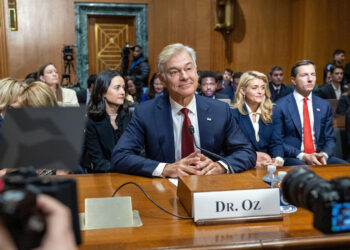With the wide variety of sunscreen options available for photoprotection in the United States, one might expect dermatologists to tailor their recommendations based on a patient’s skin type — but that’s not always the case.
According to a 2021 survey of 77 dermatology trainees and dermatology faculty across all hospitals affiliated with Harvard Medical School, 42.9% reported that they never, rarely, or only sometimes took a patient’s skin type into account when making sunscreen recommendations.
Susan C. Taylor, MD, professor of dermatology at the University of Pennsylvania, Philadelphia, advises clinicians to consider discussing photoprotection options based on several factors, including Fitzpatrick skin type susceptibilities, risk of burning or developing hyperpigmentation, and underlying cutaneous disorders. “Also, do they have aesthetic considerations and personal preferences?” Taylor asked at the annual Maui Derm Hawaii conference. “What’s their lifestyle and extent of sun exposure? And, what’s the geography of where they live? When you do make recommendations, let’s not forget the importance of instituting culturally competent joint decision-making.”
Sensible photoprotection recommendations for all patients, she continued, include the application of a broad-spectrum, photostable sunscreen with a wavelength of at least 370 nanometers to protect against skin damage caused by both UVB and UVA rays. “We’re going to have them seek shade, avoid midday sun, use protective clothing and accessories,” she added.
Photoprotection tips for patients with dyschromia and those with darker skin types include the application of a broad-spectrum photostable sunscreen to all sun-exposed areas that is tinted and contains a blend of iron oxides and pigmentary titanium dioxide to reduce transmission of visible light or one that contains certain antioxidants to counter visible light.
In 2023, an international expert panel of Asian dermatologists convened to discuss photoprotection recommendations for Asian patients, which included advising against UV light exposure and recommended the use of tinted or color-correcting sunscreens to camouflage depigmented areas in patients with vitiligo. Previously, a separate international panel conducted a literature review and met to provide sunscreen recommendations for different skin phototypes, and various photodermatoses and pigmentary disorders, which were published in 2021. The panel noted that while sunburns can provoke vitiligo, UV exposure is essential for the repigmentation of vitiligo lesions. “I agree,” said Taylor, who was not involved with the recommendations. “Once the lesions start to become pink, that’s when they need to apply a broad-spectrum sunscreen [to prevent sunburn],” she said.
Taylor noted that Asian sunscreens, particularly those from Korea — commonly known as Korean beauty or K-beauty — have gained popularity in recent years. “The formulas contain brightening agents, hydrating agents, soothing agents,” she said. “They are lightweight, non-greasy, and fast-absorbing. They don’t leave a white cast, which our patients appreciate.”
According to published reviews of Korean sunscreens in the popular and the trade press, these products contain predominately chemical filters, some that are approved by the Food and Drug Administration, but many that are not, Taylor said, such as diethylamino hydroxybenzoyl hexyl benzoate, ethylhexyl triazone, and methylene bis-benzotriazolyl tetramethylbutylphenol.
Without randomized controlled trials comparing K-beauty formulations to American sunscreens, “there’s a lack of robust evidence to make claims about the superior efficacy of either the filters or their antioxidants in these formulations,” said Taylor, who is president-elect of the American Academy of Dermatology. “Also, when our patients get these products, we don’t know if they’re counterfeit or not because they usually use the Web [to order them].”
She disclosed being a member of the advisory board, consultant, and/or performing contracted research for numerous pharmaceutical companies. She also holds ownership interests in Armis Scientific, GloGetter, and Piction Health.
Source link : https://www.medscape.com/viewarticle/importance-personalized-photoprotection-patients-highlighted-2025a10001uk?src=rss
Author :
Publish date : 2025-01-24 18:28:57
Copyright for syndicated content belongs to the linked Source.














